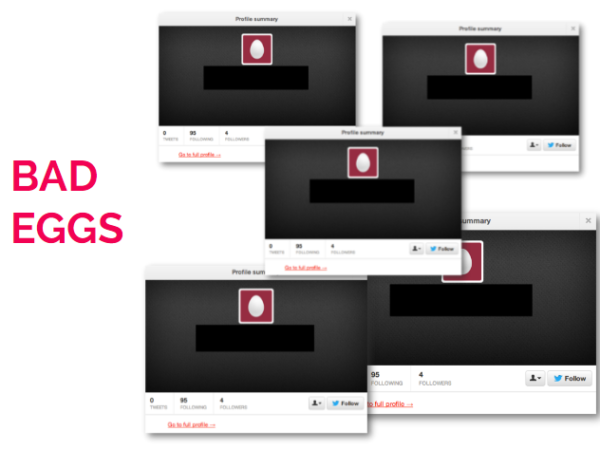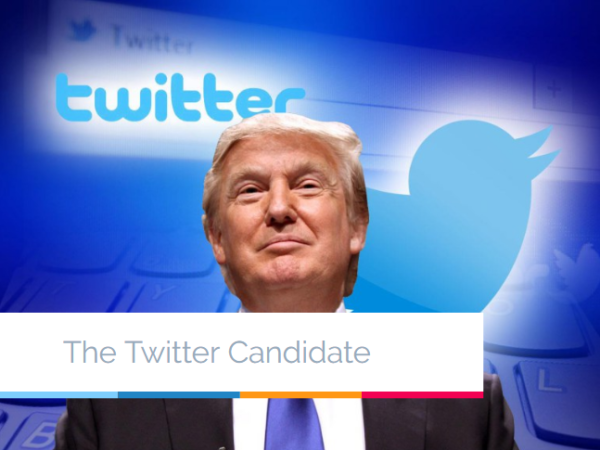
Lately we’ve heard from a number of nonprofits: you’re growing tired of Twitter. You’re not getting enough engagement. It’s filled with bots posting scheduled content. You find it moves too fast, and you simply can’t keep up.
Add to the list of complaints: the number of Twitter users has flatlined recently. And the vast majority of Twitter users have’t tweeted in the past year, or have never tweeted at all. It seems Twitter may be filled with a lot of bad eggs (read: poorly tended accounts).
It might seem safe to conclude: Maybe Twitter isn’t all it was cracked up to be. Perhaps nonprofits all jumped on the bandwagon (according to eMarketer 86% of nonprofits have a Twitter profile) but Twitter just won’t live up to its promise to help you reach new supporters.
So it’s settled, right? Time to leave Twitter. Well, not so fast…

Consider the rise of Donald Trump. The Republican nominee has called Twitter his “own newspaper.” Trump understood that in order to speak to the American electorate, he didn’t need to advertise; he could go further by courting the press.
Although there are a lot of inactive users on the platform, guess who makes up its most active demographic: journalists. They also make up nearly a quarter of the service’s users.
Certainly, Donald Trump is not the first public figure to use Twitter to bait journalists. But I would argue: he’s been by far the most effective.
Before your nonprofit jumps off the Twitter train, try focusing your efforts. Ditch the scheduled tweets and consider these approaches instead.
1. Use Twitter as a Rolodex
Consider Twitter to be your organization’s shared address book. Follow other organizations you like, partners you work with, and sources of inspiration. Better yet – save your contacts in a Twitter List, or benefit from the many great public lists already out there.
This is similar to the way I’ve heard teens now use Facebook: they have an account and lot of friends. But they rarely post or check their Newsfeed. It’s, like, the White Pages, except you know all the people “in real life.”
2. Use Twitter to cultivate journalists
Sure, you’ve heard that people do this – but what does it actually look like in practice? Your nonprofit might not attract the same kind of Twitter following that Donald Trump has, but you can certainly still approach the platform as a press cultivation tool. Follow the reporters and news outlets you like. (ProTip: Check out these terrific 13 Twitter media lists compiled by M+R.)
Then, show them some love when they publish a great story on your issue. Reporters genuinely appreciate when people read and share their work, especially if it’s an engaged audience. Just be sure to tag both the name of the outlet and the reporter in any posts you share, like this post from our client Echoing Green:
Interesting: should #socent focus more on future problems?https://t.co/fZX02WEWOT #socinn @adele_peters @FastCoExist
— Echoing Green (@echoinggreen) August 18, 2016
Beyond this, you can also respond to a story with additional resources or writing on the subject. This lets reporters know that you could continue to be a resource to them in the future.
@coopnytimes I enjoyed your article. May be of interest: “The Genesis of the Metropolitan Opera House Chandeliers:” https://t.co/tDK3mMsAVz
— kyna leski (@kynaleski) August 20, 2016
Met a reporter in person? Why not thank him or her publicly for taking the opportunity to learn about your organization, like this tweet from the Communications Officer of the Robert Wood Johnson Foundation? Note that the tweet came from a personal handle, not an organization, and that the period (.) was used in front of the reporter’s handle, to make sure the tweet was visible publicly.
.@tirosenberg @dnbornstein So wonderful to meet you both yesterday at @RWJF. Thx for coming to visit us!
— Jennie Day-Burget (@JDBurget) June 21, 2016
3. Only Use Twitter to Comment on Live Events
Twitter is the most ephemeral of social media ephemera. Blink, and a story has passed you by.
Given this atmosphere, it’s best to talk to people “live” as breaking news or live events unfold. Some interesting research has come out about the recall of people who Tweet together while watching TV. So if your organization has a take on the role of women in “Game of Thrones,” wade in and discuss. Have reactions to the jobs plan that will be unveiled at the State of the Union? Get on that hashtag. If you’re at a conference, take advantage of the WiFi connection and the captive audience.
As with any social media strategy: it’s important to tailor your approach to the habits and properties of the network you’re working with. The rest? Perhaps you can ignore.